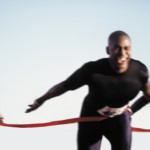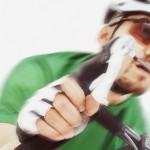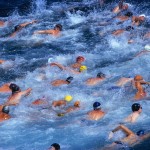 Does workout recovery matter?
Does workout recovery matter?
Do you include a workout recovery plan as part of your racing or workout program? You should! Here’s why: long term sustainable exercise happens through the delicate and very individual balance between exercise (workload) and rest (recovery.) Depending the distance you’re racing or your workout goal, your training program should not end with race day or goal day, it should actually extend anywhere from one day to three weeks after. Ask any athlete who’s been involved in long term racing or sustainable athletics and has remained injury-free, you’ll find the common thread to be that of allowing sufficient recovery from hard racing and tough workouts.
Accept your need for recovery as part of your exercise program. Better yet, program it in. Keep your schedule on the calendar just as you do when in your heavy or building training period, just write “off” or “30 minute jog.”
Here are a few ways how to decrease the stress of accepting and respecting your recovery period as an essential part of your training program:
Cross Train. Choose an entirely different mode of exercise all together. Change the angle at which you’re working your muscles. If you routinely do high-impact, try non-impact exercise. If you regularly partake in exercise over 90 minutes, set a recovery limit of fifty-percent of your average weekly workouts. If you’ve been wanting to try a different workout, now is the time to do it when the new workout won’t interfere with your race program.
Rest. That’s right, rest! Do less, do nothing, do whatever whenever the mood strikes you. Resting not only applies to your body, but to your mind as well. This includes psychological and emotional rest. When we are racing or focused on completing a major fitness goal, our mind works just as hard. Get caught up on movies, sort through paperwork, play puzzles with your kids. Sit. Rest. Relax. Many are afraid of rest for fear that they’ll lose all their fitness efforts over night. Rest assured, you won’t. In reality, the contrary is true, you’ll come back to your sport and fitness with more enthusiasm than before. Let yourself miss your activity!
Tend to the details. During your recovery period is a great time to tend to those tiny details that during your heavy training were tolerable, but just barely. For example, that nagging foot discomfort you’ve been tolerating (go see your doctor), or your slightly-off hydration plan (research other alternatives), or those biking shoes that just getting worn out (try out new equipment.) This is like your rainy-day activity list. Tiny details that you just never have time for during your training. Get them sorted out now, so when your recovery period is complete, you’re ready to go.
Catch up. Catch up with other areas of your life that may have been neglected during your heavy training period. Re-introduce yourself to your spouse, to your children, to your boss, to your friends. Go ahead and make that time active if you’d like, but activity is not the priority. Get caught up on your desk work, yard work, and the kid’s homework, anything other than variables that have to do with your race or goal.
Bask in your accomplishment. You’ve worked hard to reach your goal, why not allow time to enjoy it before darting off to begin your next training period. Read articles on your sport, send fellow athletes your race pictures, share your race report in a blog post, chat with other participants, and plot out your next race or fitness goal undertaking; have some fun with your accomplishment! There are ways to stay connected with your sport, your training buddies and current events, without the physical demands required by logging the miles in race prep. So go ahead, hone your verbal, written and artistic skills for a change. Brag a little. You’ll inspire fellow athletes, and yourself.
 Subscribe
Subscribe





